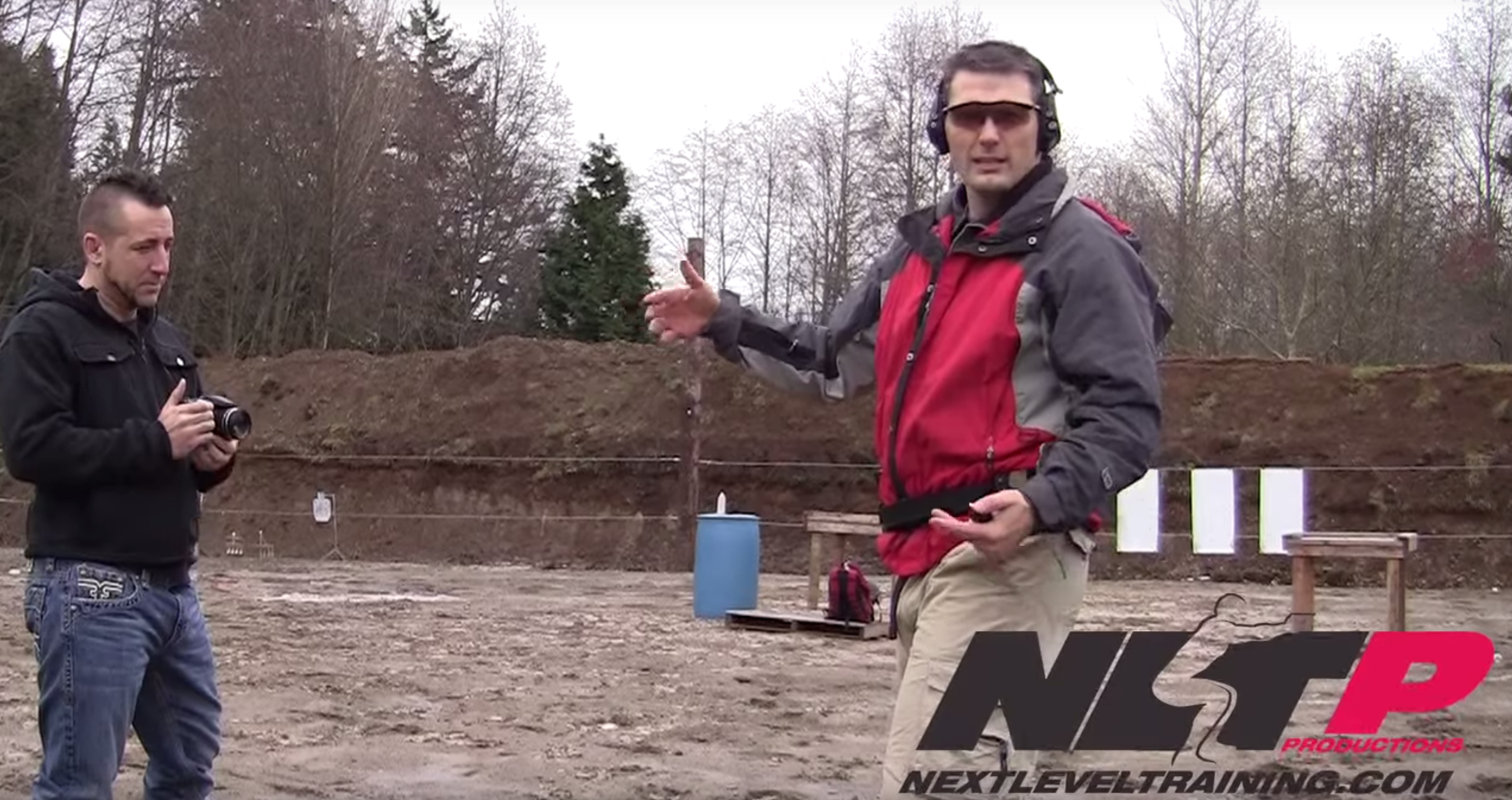Straight arms or Bent Arms When Shooting a Pistol?
ANALYSIS OF RECOIL WITH HIGH-SPEED CAMERA
One focus of this analysis is to understand whether you should use straight arms or bent arms. This video shot a few years ago is at least a beginning of an analysis to slow things down and see if there’s any difference between straight arms and bent-arm shooting. In a rapid-shot drill, the slide is moving so fast, it’s very hard to get an idea what the muzzle is doing during those rapid shots. Of course, you can look at the accuracy, but how do we know if it’s trigger mechanics or our upper triangular support? As shown at about 1 minute and 20 seconds in the video there is an analysis of all the shots. One area of focus is looking if the muzzle dips downward and if it returns to the same location.
At about 1:50 there is a second iteration where the elbows are aggressively rolled outward causing chest squeeze at the base of the thumbs (which are pliable) and the arms are a little bit higher closer to the muzzle.
One important point noted at 2:20 in the video is the shoulder blades are still rolled back and engaged to not bring the shoulders too far out of socket.
One very helpful skill is to have some big dumb muscles on the gun or I certainly prefer a C-clamp grip and chest squeeze as I’d covered in the grip.nextleveltraining.com series.
EQUIPMENT:
This particular video was shot with 1,000-frame-per-second specialized camera, but nowadays, most cell phones will shoot 240 frames per second which meets threshold for this type of analysis.
SETUP:
As noted in about 4 minutes you can see the SLR camera, but I would suggest using your cell phone to start off with this type of analysis and putting it on a makeshift tripod (you can literally just use clamps to hold her down).
DON’T BE AFRAID TO CHANGE IT UP:
Don’t be so locked into your current technique that you’re afraid to try something different like rolling your elbows outward (as discussed in the grip course). As described about 5:50 there is a comparison of how the recoil flows through the body with bent arms and a little bit more straight rolled arms.
There’s not a huge amount of difference between these two variations; however, learning that there is not be a major difference is a good in itself.
This post is really for people who want to be the best possible shooters they can be. It’s not so much a description that you have to shoot like this or that, but moreover, this should illuminate a process of using technology and tools to improve your shooting and not be afraid of changing it up a bit and measuring the results. We all should not rigidly adhere to any specific technique where in the end it’s what performs best in the most diverse (and adverse) circumstances.
Would you like us to send you more good stuff like this?
We can send you our newsletter.

Thanks for sharing your rapid firing analysis on slightly different shooting positions! Next time analyze the grouping and time on both positions. If negligible difference, I’d pick the position with the least muscle tension or the more natural position.
Cool video.
Small suggestion. Next time wear a full length compression shirt and put markers (little yellow or white stickers) on your joints and maybe on the front and back of the slide (on the side your filming on of course). You wont get to full motion capture data but it will help to quantify the movement particularly if your software has some sort of point tracking feature.
On the dip in the later shots, my wild @$$ guess is not that your body is getting tired (its too short of a period of time for a physiological response to that stress), but that you may have some sort of harmonic wave building up (or you body is reacting to the build up of a harmonic wave and creating a muffled cosine wave). It would be interesting if you could slightly offset your shot timing to tamp down that wave(s) or if the dips disappeared when you used double taps.
Cheers.
You are also getting more roll in your grip. You may want to double check your grip mechanics. This very cool and informative…thanks for sharing it with us.